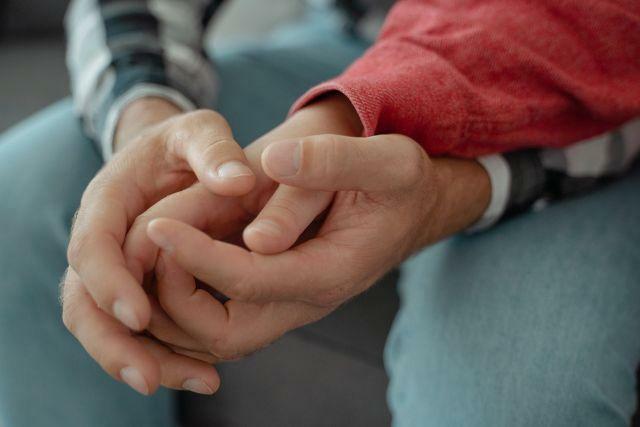Immediate Availability - Open 7 days a week - day, evening and weekend appointments
Immediate Availability - Open 7 days a week - day, evening and weekend appointments

From a young age, you learn so much from the people around you. You’re taught how to walk, read, add fractions, and much more.
But what about communication skills? Or conflict management tips? Or how to create a strong, healthy relationship?
It’s one thing to fall in love with someone. It’s another thing to build a supportive relationship with them.
Emotional safety is the foundation that any healthy relationship is built upon. Many people enter serious, long-term relationships without knowing how to create emotional safety. What does it look like?
Below, we’ll explore what emotional safety really means and how you can use it to build stronger relationships:
If there’s one person with whom we need to feel safe more than anyone else, it’s our partners.
Your partner is someone you share your most vulnerable moments with, whether it’s after a stressful day at work or a traumatic life event.
That’s why it’s so important to feel safe with that person. Your relationship should be a place where you feel comfortable sharing your thoughts, feelings, and concerns with your partner.
Emotional safety is when you’ve built up enough trust and security with someone that you can be honest with them. An emotionally safe relationship creates a space where both partners can express themselves and listen to the other person without fear of being disrespected or judged.
Communication is vital in any relationship in your life, but especially so with your partner.
But what if you don’t feel comfortable enough to honestly communicate with your partner?
An emotionally unsafe relationship is characterized by feelings of distrust and anxiety. We’ll list a few signs of emotionally unsafe relationships so you can better recognize these signs in a partner or within yourself.
An emotionally safe relationship allows you to build a deeper and stronger connection with your partner. Here’s what that might look like:
When you express your concerns, you can trust that your partner will actively listen to you. They’ll consider what you say, and when necessary, they’ll change their actions.
You’ll feel comfortable enough to be vulnerable, open, and honest with your partner. You won’t worry that if you share a concern, your partner will lash out at you. Rather than hide parts of yourself in fear of being judged, you’ll trust your partner enough to share your ideas, goals, and everyday thoughts.
You’ll be confident about your relationship. You’ll accept that your partner values, respects, and cares about you.
You won’t worry that your partner has secret grievances about your relationship or holds a grudge. Instead, you’ll trust that both of you are committed to being transparent and open with each other. You’ll experience a sense of relaxation in their presence.
What can you do to make your relationship a safer place for you and your partner? Here’s how to build emotional safety to create a healthy and happy relationship:
Boundaries exist to protect someone’s sense of emotional safety. You can think of a boundary as a guideline for acceptable behaviours. It defines which behaviours are acceptable to another person.
You can set a boundary anytime you want to draw that line. A boundary tells another person what you’re comfortable with and what makes you uncomfortable.
To illustrate that, we’ll list a few examples of boundaries you can set in your relationship:
You can set a boundary at any point in your relationship, whether you’ve been with someone for one week or five years. And to maintain emotional safety, your partner must respect boundaries.
The opposite of safety is instability. If your partner can’t predict how you’ll react, they may avoid confrontation for fear of an argument or emotional outburst.
Try to keep a level head whenever you’re discussing something with your partner, and keep your words consistent with your actions (if you promise to make a change, follow through with it!).
Your body language plays a big role in how you communicate. Studies show that up to 55% of communication is non-verbal.
Even if you’re saying something like, “I hear you, and I’m sorry”, your body language may be telling another story.
Be aware of the body language that you use with your partner. For example, if you assume a defensive posture—arms crossed, eyes downcast, and an angry tone of voice—you’re sending conflicting messages.
What does it mean to practice active listening?
It’s when you tune out other distractions when talking to your partner—you might turn off the TV or put away your phone.
It’s when you take in what they say and let them finish speaking before you respond to it directly—instead of waiting for your turn to talk.
In general, it’s when you ensure your partner feels heard when they speak. You try not to judge or criticize them, and instead, you listen to them patiently.
Active listening goes both ways. To create emotional safety, both parties need to practice their listening skills, especially during difficult conversations.
It can be challenging to bite your tongue if your partner is asking you to change your behaviour. Your first instinct may be to defend yourself or retaliate.
Remember: Your partner is on your side, and they only want to make your relationship better. Consider their point of view and hear out what they have to say before you respond.
Emotional safety means that you also feel comfortable challenging your partner when you need to. For example, you can encourage them to meet their goals or follow through with their commitments (whether that’s trying to eat healthily or spend less time on social media).
When you make a promise to your partner and follow through with it, that builds trust. Your partner will know that you stay true to your word—when you say you’ll do something, you do it. It shows that you’re committed to working on your relationship and yourself.
When you accomplish something, your partner may be the first person you tell. You want that person to celebrate your achievements with you. And you want them to cheer you up on the hard days, too.
Emotional safety means that your relationship is a place where both of you receive the support you need.
This is also true of how you speak to others about your partner. Maybe you share their accomplishments with your friends and family. Maybe you make a post on social media. Either way, gestures like these demonstrate to your partner that you’re proud to be with them.
On that note, other ways of communicating can directly threaten the emotional safety of your relationship. Try to should avoid the following:
It takes time to make lasting changes in a relationship. If you’re struggling to create an emotionally safe place for each other, a professional can offer you advice and insights. They can help you identify ways for both of you to create a safe environment for each other.
Are you thinking about talking to a professional about your relationship? It can be a daunting decision to make. After all, you’re letting a stranger in on a very private aspect of your life.
But by working with a professional therapist, you can make changes that have a real impact on your happiness and the quality of your relationship.
We can help you create emotional safety in all relationships in your life, from the one with your partner to the ones you share with friends and family. If you’d like to learn more, reach out to One Life Counselling and Coaching today.
